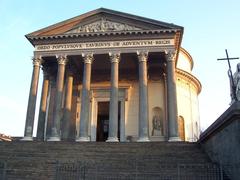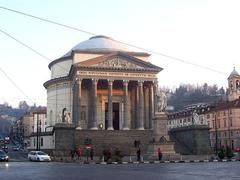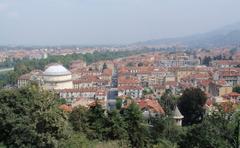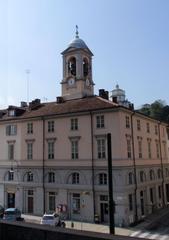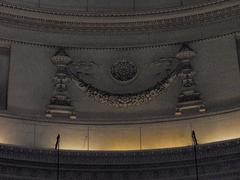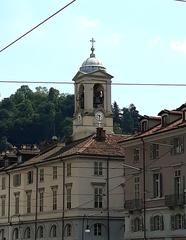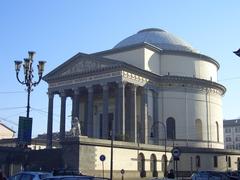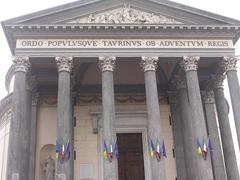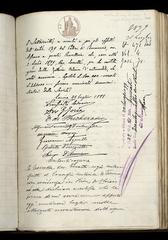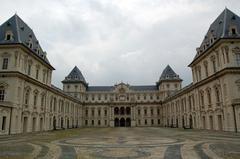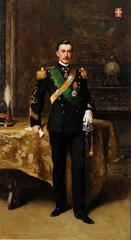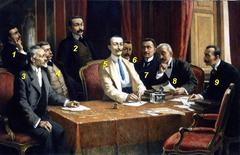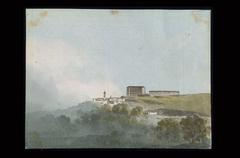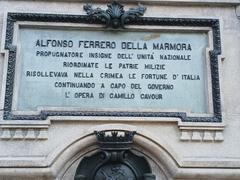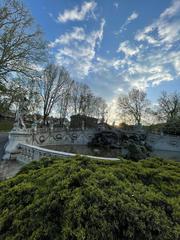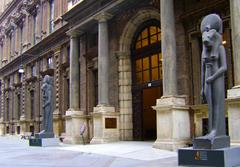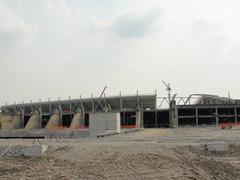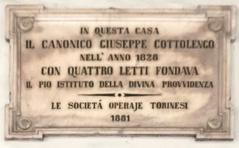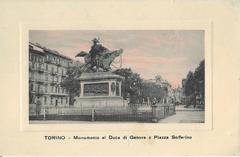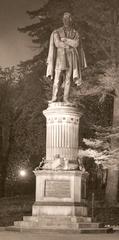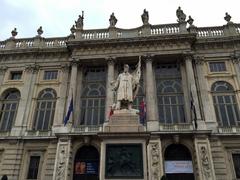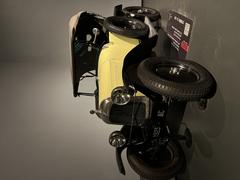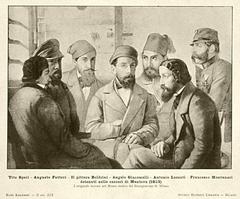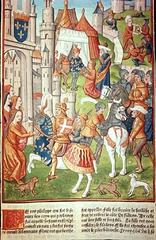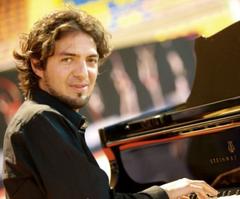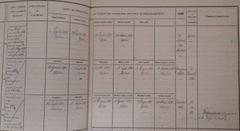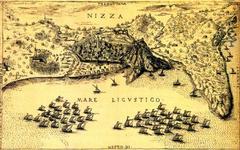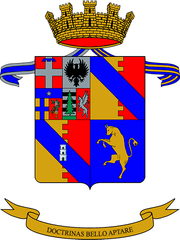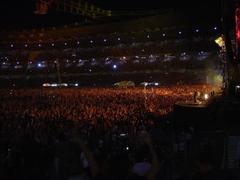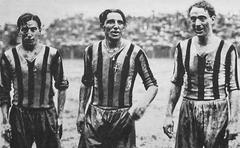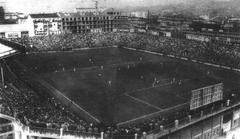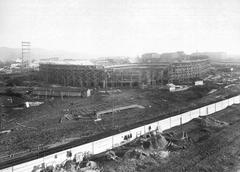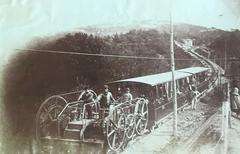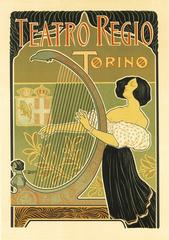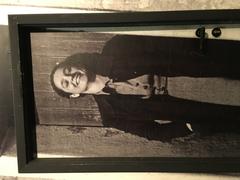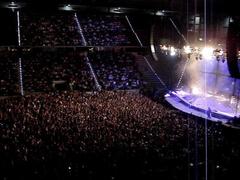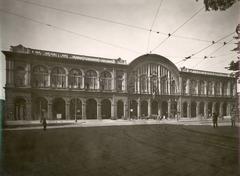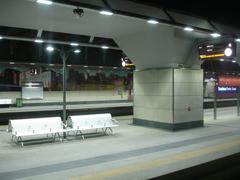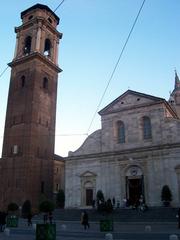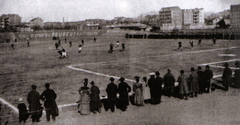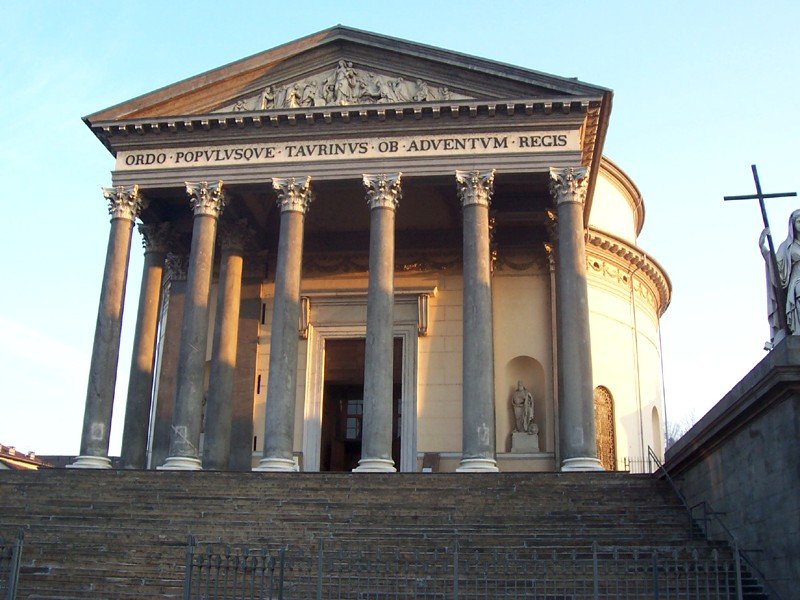
Gran Madre di Dio, Turin: Visiting Hours, Tickets & Historical Guide
Date: 15/06/2025
Introduction
Standing majestically on the eastern bank of the Po River in Turin, the Gran Madre di Dio is a masterpiece of neoclassical architecture and a monument of profound political, civic, and spiritual significance. Commissioned in 1814 to celebrate the restoration of the House of Savoy and the return of King Victor Emmanuel I following the defeat of Napoleonic forces, the church reflects the city’s resilience and unity. Designed by Ferdinando Bonsignore, the Gran Madre di Dio draws inspiration from Rome’s Pantheon, featuring an iconic dome, grand portico, and Corinthian columns. The site is further enveloped in local legends, including tales of the Holy Grail and ancient cults, which add to its rich tapestry of intrigue (turismotorino.org, Voyage Tips, chasingtheunexpected.com, italia.it).
This comprehensive guide explores the Gran Madre di Dio’s history, architectural features, symbolism, visitor information, and practical tips, ensuring an enriching experience for all visitors—whether you are passionate about architecture, fascinated by history, or eager to uncover the mysteries of Turin (italyscapes.com, turinepi.com).
Table of Contents
- Historical Context & Purpose
- Construction Timeline
- Architectural Design & Features
- Artistic Highlights
- Symbolism and Local Legends
- Civic & Royal Patronage
- Restoration & Preservation
- Visiting Information
- FAQs
- Visuals & Media Suggestions
- Conclusion & Resources
Historical Context & Purpose
The Gran Madre di Dio was conceived in 1814 after the return of King Victor Emmanuel I to Turin, marking the end of Napoleonic rule and the restoration of the Savoyard monarchy. The city’s nobility and citizens commissioned the church as an act of gratitude, dedicating it to the Virgin Mary. The Latin inscription on its frieze—“ORDO · POPVLVSQVE · TAVRINVS · OB · ADVENTVM · REGIS”—translates to “The nobility and people of Turin [dedicate this] on account of the return of the king,” encapsulating its civic and royal significance (jacobite.ca).
Construction Timeline
- 1814: Project conceived following the King’s return.
- 1818: Foundation stone laid by Victor Emmanuel I.
- 1827: Construction resumed after a decade-long pause.
- 1831: Church inaugurated under Charles Albert of Savoy.
The church’s completion coincided with the urban development of Piazza Vittorio Veneto, reinforcing its role as a focal point in Turin’s ceremonial and civic life (turinepi.com).
Architectural Design & Features
Neoclassical Vision
Architect Ferdinando Bonsignore’s design was inspired by the Pantheon in Rome—a deliberate nod to ancient grandeur and the ideals of stability and continuity. The church’s harmonious proportions and classical elements reflect the Enlightenment values of the period (turismotorino.org, Voyage Tips).
Key Features
- Grand Staircase: Approached by a wide, impressive stairway, offering panoramic vistas of the city and Alps.
- Portico (Pronaos): Six Corinthian columns support the portico, echoing the Pantheon’s entrance.
- Dome: The hemispherical dome, rising above a cylindrical drum, dominates the skyline and bathes the interior in natural light.
- Bas-Reliefs & Statues: The pediment features a bas-relief of the Virgin and Child with the city’s decurions; flanking the steps are statues of Faith and Religion by Carlo Chelli (turinepi.com).
Artistic Highlights
Architect & Sculptors
- Ferdinando Bonsignore: Pioneered the neoclassical style in Turin.
- Giuseppe Gaggini: Sculpted the statue of King Victor Emmanuel I, installed in front of the church (jacobite.ca).
- Carlo Chelli: Created the allegorical statues of Faith and Religion.
- Fine Arts Academy Students: Contributed to bas-reliefs and decorative elements (turinepi.com).
Interior Art and Features
- Nave & Sanctuary: Single, luminous nave leading to the apse; the high altar is dedicated to the Virgin Mary.
- Bas-Reliefs: Depict scenes from the life of the Virgin, executed in a restrained neoclassical style.
- Dome Interior: Adorned with geometric patterns and frescoes, illuminated by an oculus.
- Ossuary: Located beneath the church, dedicated to World War I victims (turismotorino.org).
Symbolism and Local Legends
Beyond its architectural and historical importance, the Gran Madre di Dio is shrouded in symbolism and myth:
- Esoteric Legacy: Local legend suggests the site was once a temple to Isis, linking it to Turin’s reputation for mystical energies (chasingtheunexpected.com).
- Holy Grail Legend: The statue of Faith is rumored to depict the Madonna holding the Holy Grail, and some believe the relic is hidden beneath the church’s steps (Voyage Tips).
- Popular Culture: The church’s famous staircase was featured in the 1969 film “The Italian Job” (Lonely Planet).
Civic & Royal Patronage
The construction was a collaborative effort between Turin’s civic authorities and the royal family. The decurions (city councilors) and the House of Savoy were instrumental in sponsoring and endorsing the church, which became the royal family’s preferred place of worship (jacobite.ca, turinepi.com).
Restoration & Preservation
Ongoing restoration work and the addition of statues reflect Turin’s commitment to preserving the church as both a historical and architectural treasure (jacobite.ca).
Visiting Information
Hours & Tickets
- Opening Hours: Generally open daily from 7:30 AM–12:00 PM and 3:30 PM–7:00 PM. Check the official parish website for current hours.
- Admission: Free; donations are appreciated.
Accessibility
- Access: The main entrance is up a grand staircase; a ramped side entrance offers limited accessibility.
- Public Transport: Tram lines 13 and 15, buses 52, 53, 56, 61; nearest stop is Gran Madre Cap (GTT Torino).
- Parking: Limited street parking; paid garages within a 10-minute walk (Parcheggi Torino).
Travel Tips
- Best Time to Visit: Weekday mornings for quiet reflection; evenings for stunning illuminated views.
- Dress Code: Modest attire is required.
- Photography: Non-flash photography allowed except during services.
Nearby Attractions
- Piazza Vittorio Veneto: Historic cafes and shops.
- Monte dei Cappuccini: Panoramic views of Turin and the Alps (Museo Nazionale della Montagna).
- River Po Promenade: Ideal for scenic walks or cycling (ToBike).
Frequently Asked Questions (FAQ)
Q: What are the visiting hours?
A: Typically 7:30 AM–12:00 PM and 3:30 PM–7:00 PM; check the official website for updates.
Q: Is there an entrance fee?
A: No, entry is free.
Q: Are guided tours available?
A: No official tours, but many local operators include the church in city tours.
Q: Is the church accessible for those with disabilities?
A: The main entrance is via steps, but there is limited ramp access; contact the parish in advance for assistance.
Q: Can I take photos inside?
A: Yes, without flash and not during services.
Visuals & Media Suggestions
- High-resolution images of the façade, staircase, dome, and statues of Faith and Religion, with descriptive alt tags (e.g., “Gran Madre di Dio Turin façade”).
- Panoramic photos from the steps or Monte dei Cappuccini.
- Interactive maps showing the church’s location and transport links.
- Embedded short video or virtual tour of the interior and panoramic outlook.
Conclusion
The Gran Madre di Dio is more than a neoclassical architectural marvel; it is a living emblem of Turin’s political, cultural, and spiritual legacy. Its harmonious blend of art, history, and legend invites visitors to explore not just the church itself, but the broader narrative of Turin’s resilience and identity. With free admission, accessible visiting hours, and a prime location near key attractions, the Gran Madre di Dio is an unmissable highlight for anyone seeking to understand Turin’s rich heritage.
Plan your visit today—download the Audiala app for guided tours, real-time updates, and insider tips on Turin’s historical treasures. Follow us on social media for the latest events, guides, and inspiration for your next Italian adventure!
